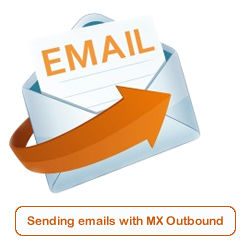When running your email campaign do you process and handle your hard bounces?
What are hard bounces?
Hard bounces are caused by email addresses or domain names that no longer exist, or they're unrecognised by the ISP - most likely due to DNS (Doman Name Service) issues. If your campaign has a large number of hard bounces this usually indicates the email address list is of poor quality or not maintained well enough.
If you don't remove the "Hard Bounced" email addresses from your mailing list it could lead to your IP Address being Blacklisted by a number of blacklisting sites and ultimately affecting all of your sent emails.
What are soft bounces?
A soft bounces, are produced by a temporary issue with the recipient's inbox (e.g. mailbox full, out of diskspace etc). Soft bounces will often retry sending and you will see these as "deferred" messages on a mail queue. When looking at the MXTools logs, if you see a deferred message in the log entry there is normally an explaination of why it's deferred.
The golden rules for bounce backs
The golden rules for bounce backs when running your email marketing campaign are:
- Process your hard bounces and remove the email address from your campaign list.
It's worth investigating why it's a hard bounce if it genuinely is a company you want to contact. Maybe the domain name has changed, or maybe the recipient no longer works for the company and you will need to find a different address within the company
- Process soft bounces. Check the error message of the bounce, it's not always a mailbox full message. It could be a soft bounce due to content spam-filtering so you may want to consider tweaking your campaign to avoid spam filters and also to not affect your sender reputation.
In this Series
Don't miss the rest of this series on email marketing. Follow the links below for the full article.
- Introduction
- Your Audience
- The Right Message
- The Law
- Opted in lists
- Opting out
- Address List
- Sending your email
- Avoiding Spam Filters
- Processing bounce backs
- Improving your open rate
- Optimise your email for mobiles
- Using video in your email
- Monitoring the campaign
- Regular communications

